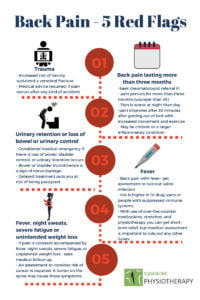 Stroke is one of the leading cause of disability among adults. According to Heart and Stroke Foundation-
Stroke is one of the leading cause of disability among adults. According to Heart and Stroke Foundation-
- Every seven minutes in Canada, someone dies from heart disease or stroke.
- This year in Canada, there will be an estimated 70,000 heart attacks, 40,000 cardiac arrests, 62,000 strokes.
- More than 1.6 million survivors, and their families and caregivers, are living with the devastating after effects of heart disease and stroke.
- Heart disease and stroke are two of the three leading causes of death in this country, costing our economy more than $20.9 billion every year.
- Nine in 10 Canadians have at least one risk factor for heart disease and stroke.
80 per cent of premature heart disease and stroke can be prevented.
For those who survive and other less severely affected patients, physiotherapy is a valuable and necessary part of rehabilitation, significantly increasing the chance of returning to independent living.
Stroke is a medical emergency. Recognizing and responding immediately to the stroke signs by calling 9-1-1 or your local emergency number can significantly improve survival and recovery.
What is stroke and why does it happen?
Strokes occur when the supply of oxygen and nutrients to or within the brain is interrupted or reduced. There are two main types of strokes: ischemic and haemorrhagic.
Ischemic strokes are caused by blockage of a blood vessel to or deep inside the brain. This can happen because of a clot, air bubble or fat deposit.
Haemorrhagic strokes are the result of a blood vessel that bursts, either inside the brain or on its surface, causing bleeding.
Ischemic strokes are the most common, accounting for up to 85 per cent of all strokes.
Ischemic Stroke
Stroke risk factors and symptoms
While strokes can affect anyone at any age, they are more likely later in life, especially in people who smoke, have high blood pressure, or are overweight.
Someone who is experiencing a stroke will have:
Difficulties with speaking and understanding.
Numbness or paralysis of the face, arms or legs, typically on one side of the body.
Blurred or blackened vision in one or both eyes.
Troubles walking, dizziness, and loss of balance.
It is vital to call immediately the emergency services, if any of these symptoms occur. Prompt treatment increases the chances of survival and reduces the risk of long-term damage to the brain.
What treatment do stroke patients need?
Initial treatment may involve the use of medicines or surgery to help restore blood flow to or within the brain. These may also help lower the risk of having another stroke. Commonly used medicines include alteplase, aspirin and warfarin.
Physiotherapy is key
Soon after a stroke, patients may have impaired ability to speak, walk or move certain parts of the body. So, after initial treatment, they may need to undergo a period of rehabilitation to help with recovery. Physiotherapy is an important part of an effective rehabilitation strategy for stroke survivors, helping them re-learn skills and master new ways of doing things, to compensate for the abilities lost due to damage to the brain.
When to start
Physiotherapy rehabilitation starts very early following a stroke, usually within the first 24 hours. Research shows that this increases significantly the chance of patients regaining their functional abilities faster.
For example, a study by the Florence Neuroscience Institute in Australia found that, in a group of 71 stroke patients, those who received early and intensive rehabilitation by trained physiotherapists returned to walking after an average of 3.5 days compared with 7 days for those who did not receive physiotherapy. The findings indicate that, “earlier and more intensive mobilization after stroke may fast-track return to unassisted walking and improve functional recovery,” says Dr. Toby Cumming, who led the study, published in the journal Stroke.
Stroke Patient Attending Physiotherapy
Session frequency and duration
Since different areas of the brain can be damaged during a stroke, no two patients are the same, and physiotherapy sessions must be tailored to individual needs, in terms of frequency and duration.
Types of interventions
Soon after a stroke interventions are very simple. They mainly include exercises performed in bed to prevent joint stiffness, muscle tightness or spasms. When ready, patients progress to more active exercises aimed at improving their ability to sit, stand, walk or perform specific tasks (e.g., lifting an arm) they are no longer able to do well. These exercises are collectively known as ‘task specific training.’ Examples include treadmill training and performing tasks using only the limb affected by the stroke (constrained-induced movement therapy).
Stroke physiotherapy may also involve learning how to use special equipment needed to get in and out of bed, like a hoist, or move about, such as a walking frame.
Where and for how long
Rehabilitation begins in hospital, and often needs to continue after discharge. Follow-up by a certified physiotherapist with experience in stroke rehabilitation is recommended. They can devise a personalised plan of evidence-based interventions that meet patients’ specific needs and goals, helping them regain as much of their physical abilities and independence as possible.
Physiotherapy sessions usually last until recovery. However, many stroke survivors find that they benefit from physiotherapy even beyond this time.


